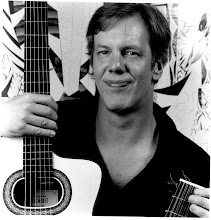
As concert venues grew even larger, the industry responded with two more electric guitar variants. One is the fully solid guitars manufactured and successfully marked first by Leo Fender and the second is the Gibson Les Paul, a design that sought to incorporate the capabilities of the fully solid-body guitar yet retain some of the sweetness of the early archtop. Both instruments are variants of the aforementioned solid-body design.
The advantage of the solid-body guitar, of course, is that loudness is limited by the power of the amplifier that drives the sound or by the point at which the player damages his hearing. Loss of hearing was a significant danger in the late 1960s, especially the venues grew to stadium size, loudness came to be regarded as part of the sensual experience of the hippie era, and many players performed drunk or stoned. Quite a few of the "old-timers" still playing today have suffered hearing loss. Another critical aspect of the instrument is that, although a variant, it is actually a radical departure from the basic physics of the electrified acoustic guitar.
The solid body guitar possesses completely different timbral characteristics than the hollowbody electric guitar, for better or worse. It's sound can be more brittle, but this timbre has become a part of the sound of historic rock 'n' roll and rock and is associated with many historically important players from the Ventures to Eric Clapton, at least in certain artistic periods. Finally, it is comparatively light in weight, a prerequisite to the dance routines that are included in some modern performances.
The first is an instrument that completely eliminated the resonating chamber inside the body. Les Paul claims its invention and there is evidence that he tried to convince Gibson to consider the guitar long before it actually went into production by the Fender Guitar Company. Gibson engineers were made familiar, then, with the solid body concept from Les Paul's crude prototype, which they rather unaffectionately called the “'plank guitar,” since it consisted of a plank of wood with a neck and pick-ups mounted on the plank. It was not until Leo Fender began producing plank guitars with tremendous commercial success in the early 1950s that Gibson fully understood that they had been a little too complacent with their successes and a bit too hasty in laughing Paul out of their office.
Leo Fender's initial commercial offerings, like many of the early electric Gibson guitars, have proven themselves to be timeless. His two principle instruments are the Stratocaster and the Telecaster, both names that reflect the "space age." The Stratocaster is associated first and foremost with both Eric Clapton and Jimi Hendrix, who routinely played one with his teeth and who burned one at Woodstock. In the image above, the Stratocaster is at the left, the Telecaster, at the right.

No comments:
Post a Comment